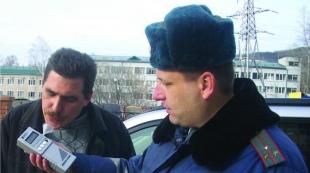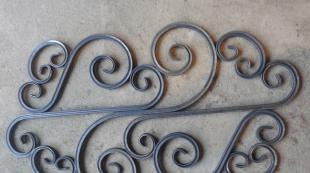Zone cable. The principle of operation and how to choose a self-regulating heating cable
The resistive heating cable differs from other heating elements in its small dimensions and ease of installation. As a heating element in the device, a conductor is used, which has a high resistance. In this article, we will consider the device and the principle of operation of a resistive heating cable.
Design features
How is the conductor arranged? Its design is based on steel cores (one or two), depending on this, the resistive heating cable is divided into two types: with one and with two cores. The conductive core is insulated with a special material. In some types, the design includes two layers of insulation. A protective screen made of metal (shielding braid) is applied to the insulating material. Its purpose is protection against mechanical damage, as well as use as a ground. For complete protection, an outer protective shell is used.

The resistance heating cable with one core has one heating conductor, which occupies the entire length of the structure. The use of such a device is considered the most cost-effective, as it is resistant to high temperatures plastic. Power is supplied from both sides of the device. Such a scheme may form some boundaries in terms of installation, since it becomes necessary to return the heating conductor to the point of its connection. There is also a need to use additional power systems.
The two-core design includes two wires: heating and current-carrying. Electric current is applied to one end of the wire, and a coupling is installed at the other end. When drawing up a project, this design option is much more comfortable to use.
Principle of operation
The principle of operation of the design describes, which says that with a uniform force electric current along the entire length of the chain, heat will be generated in any area. The higher the resistance in this area, the stronger the heat. In other words, the principle of operation is similar to an electric heater: a current flows through the conductor, which generates heat. It will be stronger if the resistance of the conductor and the strength of the electric current will be greater.
Therefore, a resistive heating cable contains a heating element which is made up of alloys with low cross section and high resistance. It is sold at a certain length, each piece of conductor has a constant resistance and the ability to release the same amount of heat.
The principle of operation of a single-core conductor is as follows: since the connection to electricity occurs from two ends, the resistive heating cable is pulled in a loop so that the two ends of the product are in one place. Such a connection is shown in the diagram below (left):

The principle of operation of a two-core resistive cable is different from the previous one. The use of two cores allows you not to bring the two ends of the product to one place. The diagram on the right shows the correct connection.
As a rule, this principle of operation makes it possible to use the device in the household and heat pipes of small dimensions. And in order for the work to take place correctly, it is permissible to use pipes with a diameter of not more than 40 mm.
Advantages and disadvantages
The principle of operation of a resistive cable has its pros and cons. The advantages of the product are as follows:
- affordable cost;
- simple device;
- with proper installation, it lasts for several decades;
- significant indicators of resistivity;
- with prolonged use, the stability of the parameters is maintained.
In Heatus zone cables heating elements 1 meter long arranged in zones. In the border areas marked with special marks, it is allowed to cut this cable. These design features play an important role: the cable can be easily cut into different lengths, which is required when installing on steps, walkways, roofs. Independence from a fixed length allows you to save on product purchases; the zonal cable took over this advantage from the self-regulating cable.
Silicone rubber is used as internal and external insulation. This material has excellent flexibility, so the elastic heating cable is easily attached to any difficult surfaces: valves, tanks, roofing elements and non-standard heating objects.

The Heatus zonal heating cable is reliably insulated with a silicone sheath, which allows it to be installed at low temperatures (up to -60°C). In addition, it has high heat resistance up to (+230°C), protected from chemical reagents, ultraviolet and moisture.
The heating element is made of high resistance alloys (nichrome filament) and is protected by a double sheath of silicone rubber. The silicone braid of the cable also provides reliable electrical insulation. The cable is difficult to damage mechanically, but even if damaged, it does not absorb water under the sheath, like a resistive and self-regulating cable.
The zone cable has a parallel structure. This design allows the cable to maintain its full performance, even with partial damage.
Products are manufactured in South Korea under the control of the ISO quality management system.

The durability of the Heatus cable is ensured by the nickel-chromium alloy of the heating core and the parallel structure of the conductor. The zonal cable inherited the last property from resistive cables with constant power, which reliably and for a long time protect industrial and domestic facilities from freezing.
Under the Heatus brand, two modifications of the zonal electric cable are produced: with and without braid. This allows the manufacturer to offer the consumer products from various price categories. At the same time, the lower price for a zone cable without grounding does not affect its service life in any way. That is why Heatus products are so in demand in situations that require flawless operation for several decades: floor heating, ground heating in production and anti-icing.
Shop "Avarit" offers zonal cable South Korean production with a service life of up to 50 years. There are discounts and special prices!
The zonal cable has recently appeared on the market for electrical heating systems, but the number of reviews about its impeccable work is growing with an undeniable progression. In Europe, there is an obvious tendency to use zonal cable in those areas of application where only self-regulating cable was previously used, this trend is also fixed in Russia. The performance characteristics of zone cable meet the heating needs of the mining industry. The cable works in the tasks of suburban and urban construction: it heats steps, open areas. It is recommended to use it to maintain the required temperature level in pipelines and tanks with aggressive media, explosive substances. This type of cable is used in anti-icing systems to deal with frost and its consequences, for heating roofs and gutters.
Zone cable differences
Zone cable includes all positive features resistive and self-regulating, this is a heating system of new possibilities! The composition of the cable core includes high resistance alloys, the power of this heating system is constant and does not depend on temperature environment. At the same time, the zonal cable has a bright advantage that characterizes the samreg: independence from a fixed length and, as a result, allows you to save on material purchases. The cable is cut to arbitrary lengths directly on the site, overlapping is allowed. Add to this the fact that zone cable has a much longer service life than self-regulating cable, and that's not all the benefits!
The zonal cable owes its name to the design: it consists of peculiar heating zones - independent heaters a meter long, and the cable is cut within the boundaries of these zones. To protect the zonal cable from overheating, sensors and thermostats are used (available in the Avarit online store). When installing the cable, correctly drawn up preliminary calculations are important. This service in the Company "Avarit" is free. Call, order, ask!
Prices and delivery
Sale of zonal cable with delivery to the regions of Russia. Pickup points in Moscow, St. Petersburg and Orenburg (online store prices).
Heating cable- this is a special type of cable, the main task of which is to convert electrical energy into heat. It is used both at industrial sites and in residential multi-apartment buildings. Widely used for laying underfloor heating system.
Heating cable: brief description
The heating cable is widely used in many fields of activity. It is used for laying underfloor heating and heating systems. Correct installation allows you to maintain a certain temperature regime not only in residential areas, but also in outdoor areas.
The action of the heating cable is associated with the process of converting electric current into a thermal element. Using this method allows you to maintain the set temperature. characteristic feature products is not the transfer of energy itself, but only its reception and transformation, without the use of an oxidizing agent or fuel.
Versatility and ease of use, as well as a special principle of operation, determines the widespread use of:
- for heating open areas;
- for heating pipes and drains;
- for heating pipes located on the roof;
- for underfloor heating;
- for use on industrial and high-temperature objects.
Proper use of a heating cable provides comfort and coziness in a residential area, and also guarantees safety at industrial facilities and open areas.
The main types of heating cable
The heating cable is conditionally divided into three types. Each of which is characterized by certain features and properties. According to the technical data, there are:
. resistive heating cable;
. self-regulating heating cable;
. zone heating cable.
The resistive type product is a classic design, created under the guidance of a modern technical process. It is characterized by fixed parameters of power and length; it cannot be divided into segments. The main advantages of the resistive type are:
Affordable cost;
. simple circuit installations;
. stable characteristics;
. high level reliability.
Resistive cable, in turn, is available in three main variations: single-core, two-core and zonal. The first type is ideal for creating closed loops, the two-core product is characterized by the availability of the system, and the zonal cable is among the standard structures. The resistive type of the product is widely used for open areas, industrial organizations, residential premises, warehouses and hangars.
The self-regulating cable is distinguished by the presence of a matrix in the structure of the product, which is made of a semiconductor elastic material. The level of resistance directly depends on the temperature indicator of the environment. The advantages of a self-regulating product include:
minimum energy costs;
- easy installation;
- the possibility of adjusting the length;
- flexibility;
- elasticity;
- long service life.
The zonal cable is a complete analog of the resistive one, it is widely used in industry and other areas. The main advantage of the model is the ability to adjust the length, without loss of resistance and power. A characteristic difference of the zonal product is the connection of one end, with complete sealing of the second.
Where to buy a heating cable
Buy a heating cable in Moscow You can in the company "ONKlimat". The main activity of the organization is the sale of goods for the installation of climate systems, as well as floor heating systems. The site presents a wide range of products from leading manufacturers.
The main advantage of "ONKlimat" is high-quality goods at reasonable prices. Another key feature of the company is the provision of partners for the installation of climate equipment systems and floor heating systems.
For detailed information about the activities of the organization, and to order the services of professionals, call the indicated phone numbers.
Underfloor heating Caleo
Underfloor heating under laminate
Warm floor under the tile
Warm floor in Screed
Every year, with the onset of frosty weather, frost forms on the roofs of houses, which causes many problems, both for owners of private households and for public utilities workers servicing high-rise buildings. During the day, the snow melts under the rays of the sun, and with the onset of night frosts, the water in the gutters and downpipes turns into ice, which damages the structural elements.
In addition, as a result of a sharp temperature drop and the presence of precipitation, icicles and ice hummocks form on the roof, which poses a serious threat to the integrity of the gutter structure. As you know, the fall of a mass of frozen water from the roof to the ground is very dangerous for passers-by. To date, the most effective means of combating icing is heating the pipeline with an electric cable. Roof cleaning services by industrial climbers are much more expensive.
Benefits of a roof heating system
Such a method of dealing with frost on the roof as cable heating of pipelines is deservedly considered the most rational, since it has a number of advantages:
- the presence of an automation system ensures ease of heating control;
- manual cleaning of the roof is excluded;
- thanks to the heating of the roof, sparing conditions are created for its operation in the cold season;
- there are no additional loads on the roof structure, since there is no ice;
- minimizes the possibility of damage to the roofing material;
- there are no leaks resulting from the freezing of ice on the elements of the drainage system.
Roof anti-icing system
The heating device for roofs, necessary to prevent the formation of ice and snow cover, has a complex design. The operation of anti-icing systems depends on the correct calculation of loads for each specific case. Therefore, only professionals should deal with the design and installation of such systems, otherwise a considerable amount of money will be spent in vain.

The minimum package of systems designed to deal with frost on roofs includes:
- heating part - cable for heating pipes and other parts of the drain with a set of fasteners. Its purpose is to directly act on ice and snow to transfer them to a liquid state, providing and. This also includes, which protect the cable from damage;
- distribution network - provides power supply to the heating components and transmission of information from sensors to the control center. The kit includes power and information cables designed for roof work, fasteners, power and distribution cabinets;
- control system - necessary for the operation of equipment that provides electrical heating of pipes, consists of a control cabinet, numerous sensors that control temperature, precipitation, ice formation, temperature controllers adapted for installing a heating cable on such types of roofs as pitched. Without fail, the system includes equipment that provides a protective shutdown if the cable insulation is broken in some place.
Electric cable for heating the drain
Not only foreign companies produce heating cable for pipelines, but also domestic enterprises.
This electrical product, shown in the photo, is produced in a wide range and differs in the following parameters:
- according to technical characteristics;
- by area of possible application;
- along the installation length.
Also, the heating cable for pipes can be:
- resistive;
- self-regulating;
- zonal;
- armored.
Resistive heating cable
It began to be used to create pipeline heating systems earlier than other similar products. The resistive cable is notable for its low price, the length of its sections, depending on the modification, is 10 - 200 meters, and the released power is 5-30 W / m. Due to low cost, it is mainly used by consumers who do the heating of the pipeline from freezing on their own.

The disadvantage of this choice is that the resistive cable has the same heat transfer throughout its length, and since the roof on private cottages, as a rule, is a complex structure, different amounts of heat are needed in its various sections to combat ice. As a result, there is an overexpenditure of electricity, since in some places the cable is unproductive.
In addition, the fixed length of the section does not always allow it to be mounted on certain sections of the roof surface.
Self-regulating heating cable
Today, self-regulating pipe heating cable is the most popular product, it is most often installed on the roof. It costs significantly more than a resistive cable, but the cost is worth it. The advantage of this is the ability of the system to change the mode of operation depending on the surrounding conditions.
Heating cable installation, detailed video instruction:
The heat transfer of a self-regulating cable, which is 6-100 W / m, depends on the thickness of the ice layer in the place where it is laid. It can be laid in segments of arbitrary length, cut off during the installation process. Depending on the brand, the maximum cable length is limited to 6-150 meters.
Armored heating cable

This product appeared on the market relatively recently and is similar in its characteristics to a resistive cable, but has increased mechanical strength and high heating temperature (up to 150 degrees). The technical characteristics of the armored cable allow it to be mounted on exploited roofs and laid in concrete. Structural features make it possible to slightly change the length, but not more than 2 meters. Armored inexpensive.









